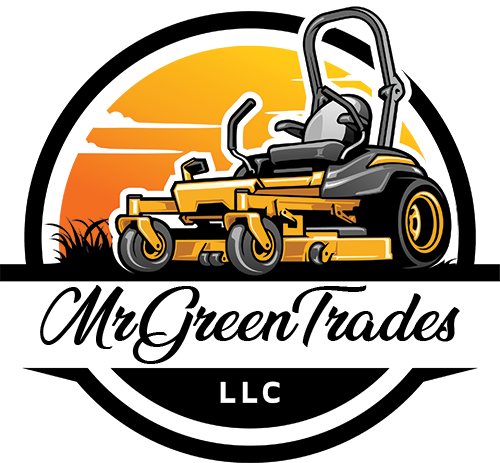A Comprehensive Guide to Lawn Maintenance Throughout the Year
Maintaining a healthy, lush lawn is a year-round commitment that requires specific care tailored to each season. From aeration and seeding to fertilization and weed control, each step plays a crucial role in ensuring your lawn thrives. Here’s a seasonal breakdown of essential lawn care processes to keep your grass looking its best.
Spring (March – May)
1. Pre-Emergent Weed Control
- Timing: Early spring (March-April)
- Purpose: Prevents the germination of weeds like crabgrass and other summer annual weeds.
- Application: Apply a pre-emergent herbicide before soil temperatures reach 55°F. This barrier stops weed seeds from sprouting, giving your lawn a head start as it begins to wake up.
2. Fertilization
- Timing: Early to mid-spring
- Purpose: Provides essential nutrients to support new growth and green up your lawn.
- Application: Use a slow-release nitrogen fertilizer to encourage steady growth. This also helps the lawn recover from winter dormancy and prepares it for the growing season.
3. Core Aeration (Optional)
- Timing: Late spring (May)
- Purpose: Relieves soil compaction, improves air, water, and nutrient penetration.
- Application: Core aeration involves removing small plugs of soil from the lawn, creating space for roots to grow and thrive. If you have heavy clay soil or a thatch problem, consider aerating in the spring.
4. Overseeding (Optional)
- Timing: After aeration (if done) or early in spring
- Purpose: Fills in bare spots, improves lawn density, and enhances overall lawn health.
- Application: Spread grass seed over the lawn after aeration or as a standalone task. Make sure the seed-to-soil contact is optimal for germination.
5. Regular Mowing
- Timing: As needed
- Purpose: Promotes dense growth and prevents weeds from setting seeds.
- Application: Begin mowing when the grass reaches 3-4 inches in height. Keep your mower blade sharp and never cut more than one-third of the grass blade at a time.
Summer (June – August)
1. Post-Emergent Weed Control
- Timing: Early to mid-summer
- Purpose: Targets weeds that have already sprouted.
- Application: Use a post-emergent herbicide to spot-treat any persistent weeds like dandelions or broadleaf weeds. Be cautious not to over-apply, especially during hot weather, as it can stress your lawn.
2. Fertilization
- Timing: Early summer
- Purpose: Maintains growth and color during the growing season.
- Application: Apply a slow-release fertilizer to provide consistent nutrients through the heat of summer. Consider using a fertilizer with a balanced ratio of nitrogen, phosphorus, and potassium.
3. Watering
- Timing: As needed
- Purpose: Keeps the lawn hydrated during dry periods.
- Application: Water deeply and infrequently, providing about 1-1.5 inches of water per week. Water early in the morning to minimize evaporation and reduce the risk of disease.
4. Mowing
- Timing: Weekly
- Purpose: Maintains lawn height and health.
- Application: Adjust your mower height to keep grass blades longer (about 3-4 inches) during the summer. Taller grass shades the soil, reducing water evaporation and helping to crowd out weeds.
Fall (September – November)
1. Core Aeration
- Timing: Early to mid-fall
- Purpose: Relieves compaction and prepares the lawn for overseeding.
- Application: Fall is the best time for core aeration as it coincides with the optimal growing conditions for most cool-season grasses. Aeration allows air, water, and nutrients to penetrate the soil and reach the roots.
2. Overseeding
- Timing: After aeration
- Purpose: Fills in bare spots and thickens the lawn for the following year.
- Application: After aeration, apply grass seed to areas needing improvement. Overseeding in the fall gives grass time to establish before winter sets in.
3. Fertilization
- Timing: Early to mid-fall
- Purpose: Supports root development and prepares the lawn for winter.
- Application: Apply a balanced fertilizer with a higher ratio of phosphorus and potassium to strengthen root systems and improve winter hardiness.
4. Leaf Cleanup
- Timing: Late fall
- Purpose: Prevents leaves from smothering the lawn and creating an environment for diseases.
- Application: Regularly rake or mulch leaves to keep the lawn free of debris. Consider using a mulching mower to chop leaves into small pieces that can decompose and add organic matter to the soil.
Winter (December – February)
1. Winterizing Fertilization (Optional)
- Timing: Late fall or early winter
- Purpose: Prepares the lawn for winter dormancy.
- Application: Apply a winterizer fertilizer if you didn’t do a late fall fertilization. This provides nutrients that are stored in the roots and used when the lawn begins to grow again in spring.
2. Snow Management
- Timing: As needed
- Purpose: Protects the lawn from snow mold and other winter damage.
- Application: Avoid piling heavy snow on the lawn, and try to distribute it evenly to prevent damage. If ice forms on the lawn, avoid breaking it up as this can damage grass blades.
Conclusion
Lawn maintenance is a continuous process that varies with each season. By following this guide and timing your tasks appropriately, you’ll promote a healthier, greener lawn that can withstand the challenges of weather and wear. Remember, the key to a beautiful lawn lies in consistency and attention to detail throughout the year.

